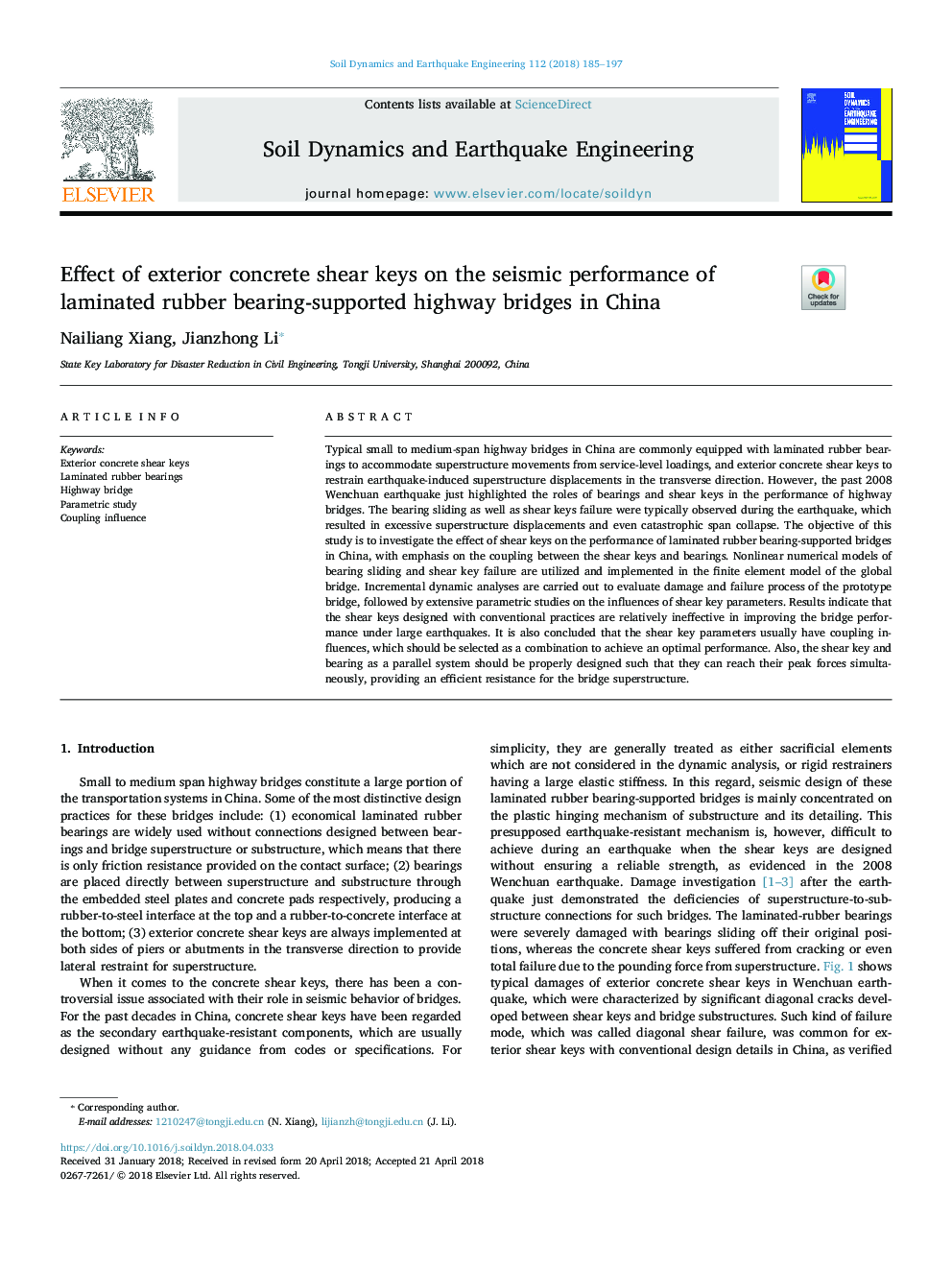| Article ID | Journal | Published Year | Pages | File Type |
|---|---|---|---|---|
| 6769924 | Soil Dynamics and Earthquake Engineering | 2018 | 13 Pages |
Abstract
Typical small to medium-span highway bridges in China are commonly equipped with laminated rubber bearings to accommodate superstructure movements from service-level loadings, and exterior concrete shear keys to restrain earthquake-induced superstructure displacements in the transverse direction. However, the past 2008 Wenchuan earthquake just highlighted the roles of bearings and shear keys in the performance of highway bridges. The bearing sliding as well as shear keys failure were typically observed during the earthquake, which resulted in excessive superstructure displacements and even catastrophic span collapse. The objective of this study is to investigate the effect of shear keys on the performance of laminated rubber bearing-supported bridges in China, with emphasis on the coupling between the shear keys and bearings. Nonlinear numerical models of bearing sliding and shear key failure are utilized and implemented in the finite element model of the global bridge. Incremental dynamic analyses are carried out to evaluate damage and failure process of the prototype bridge, followed by extensive parametric studies on the influences of shear key parameters. Results indicate that the shear keys designed with conventional practices are relatively ineffective in improving the bridge performance under large earthquakes. It is also concluded that the shear key parameters usually have coupling influences, which should be selected as a combination to achieve an optimal performance. Also, the shear key and bearing as a parallel system should be properly designed such that they can reach their peak forces simultaneously, providing an efficient resistance for the bridge superstructure.
Keywords
Related Topics
Physical Sciences and Engineering
Earth and Planetary Sciences
Geotechnical Engineering and Engineering Geology
Authors
Nailiang Xiang, Jianzhong Li,
